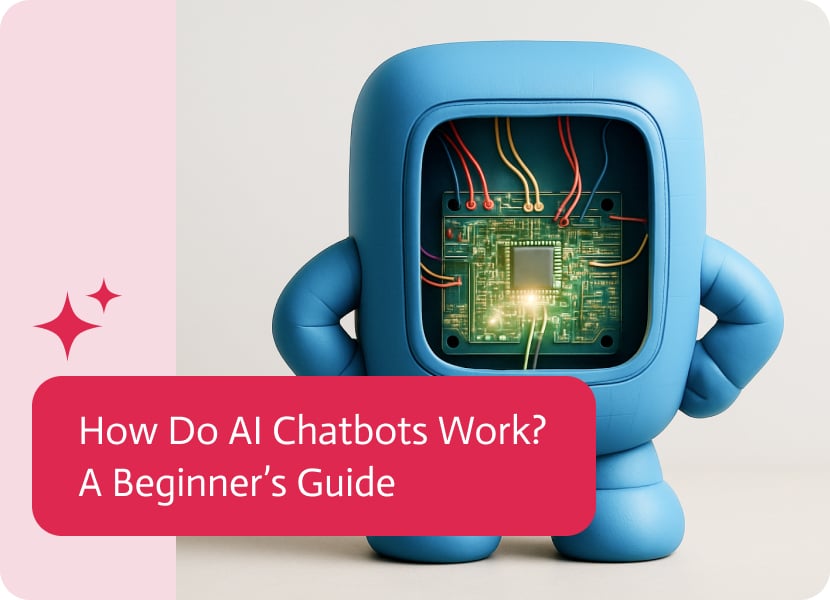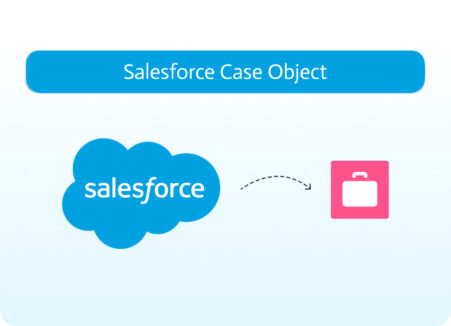

How Do AI Chatbots Work And How Are They Evolving?
AI chatbots aren’t like those old, awkward bots from way back when. Now, they can actually chat with you, get what you mean, sum things up, and switch between languages, not to mention that now you are able to use them as a tool to enhance automation across the platforms your company uses.
Recently, Noca has released an AI chatbot that pulls data and populates your chosen environment with a couple of simple English prompts. So, what’s going on inside them?
So, How Do Chatbots Actually Work?
Here’s a simple example:
1. You say, I need to change my meeting to next week.
2. The chatbot turns that into data using NLP.
3. It gets what you want and the important details (change meeting to next week).
4. It checks your calendar.
5. It shows you a new time and confirms with you.
6. You say, Sounds good.
7. The meeting has changed.
8. The chatbot remembers this for next time.
Just like that, you chatted, acted, and got it resolved.
NLP: The Heart of the Chatbot
Ever wonder what makes an AI chatbot actually *understand* you? It’s something called Natural Language Processing, or NLP. Think of it as the AI’s way of figuring out what we mean, even when we use slang, emojis, or are being sarcastic.
Here’s the basic lowdown:
Figuring Out What You Want: The chatbot tries to get what you’re asking for. So, if you type I need to see my bill, it knows you want your invoice.
Picking Out the Important Bits: NLP spots key details such as dates, names, or numbers. If you say, Set up a meeting with Sarah tomorrow at 3 pm, it grabs Sarah, tomorrow, and 3 pm.
Keeping the Conversation Going: Good chatbots remember previous details from your chat. So if you ask, What’s the weather like today? And then, how about tomorrow? It knows you’re still chatting about the weather.
Machine Learning: Teaching Chatbots to Think
Chatbots aren’t just pre-programmed; they continue to learn. Many use machine learning by studying tons of conversations and online info. This is how they figure out that I’m freezing means you’re cold and not stuck in ice.
A few ways they learn:
- Learning From Examples: Chatbots learn from conversations that have already been labeled.
- Learning by Doing: Chatbots improve by chatting with real people.
- Getting Specialized: The models can be specifically made for fields like finance, hospitals, or support.
How Chatbots Talk: Mixing Rules with AI
Most chatbots use a bit of both:
- Decision Trees (rules for common stuff)
- AI-Powered Responses (fresh, natural sentences)
This means a chatbot can reply with store times using a pre-written response, but when you ask something like, What’s the fastest way to return this old TV? It can even come up with a unique answer.
Connecting to Your Favorite Stuff
AI chatbots don’t just exist on their own. They can link up to tools like CRMs, calendars, and payment systems to make things happen.
Imagine someone asks, Where’s my order? A chatbot that’s well-connected will:
- Confirm who you are.
- Get info from the order system.
- Give you real-time details.
Chatbots That Speak Your Language
Thanks to cool new tech upgrades, chatbots can now speak many languages, just about all of them, well, the most spoken ones around the world. They don’t just translate words; they try to understand tone and culture.
You can ask a question in English, Spanish, or anything, and the chatbot should get it.
Getting Better All the Time
Great chatbots never stop improving; here’s how they’re doing it:
- Hearing From You (Was this helpful?)
- Studying new data
- Checking which questions are most common and where they mess up
This keeps them useful and more like a human.
Talking and Listening
Chatbots aren’t just for typing anymore. You can talk to them, and they can talk back, just like Siri or Alexa.
Voice-powered chatbots work well for customer support, Car systems, Healthcare devices, and Store kiosks
The Cool Tech That Makes It All Possible
The jump from basic bots to amazing ones came with tech like GPT-4. These models are trained on tons of data and are able to:
- Write code
- Summarize files
- Understand tone
Basically, this tech turned chatbots into real virtual helpers.
Noca’s Chatbot: Your Smart Sidekick for Salesforce
So, a lot of AI chatbots say they’re great for business, right? Well, Noca’s chatbot actually is, especially if you use Salesforce.
Imagine you’re in sales, running from meeting to meeting, trying to follow up with leads and keep your pipeline up-to-date. Instead of wasting time searching through Salesforce or clicking around, you can just ask Noca:
What are the big deals closing this month?
Voila, Noca’s chatbot grabs the info from Salesforce and gives you a quick list. You don’t have to switch between tabs or mess with reports. You just get the answers you need, super fast.
Here’s why it’s so cool:
Noca’s chatbot talks straight to your Salesforce, so you’re always seeing the latest info. This use of real-time data ensures you’re always one step ahead of your competition. You don’t have to be a Salesforce expert, it understands exactly what you want, which means you can just ask questions like you normally would.
You can get all the important stuff about deals, like how big they are, where they are in the process, who owns them, and what to do next, all in an organized way. It works everywhere, so you can use it on your computer, phone, or even with voice commands.
And because it works for everyone, your marketing team can ask things like:
Which leads from our last thing turned into real opportunities?
Or your support team can ask, Who has open support requests and active deals?
With Noca’s chatbot, your Salesforce data is easy to access. Just talk to it, and it gives you the answers you need to take action.
Final Thoughts: Chatbots Are Getting Smarter Fast
AI chatbots today can speak many languages, use voice tech, and work with your favorite tools. They’re changing support, shopping, teaching, and HR.
What’s next? Soon, they might run tasks, make content, and even manage businesses. What started as a simple chat box is now a smart way for people and computers to talk.
So, next time you ask a bot a question, remember all the crazy tech it uses to respond like a human.


